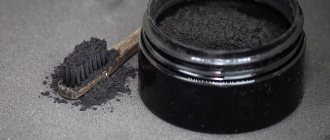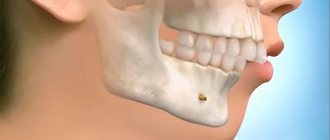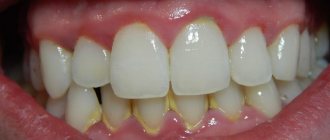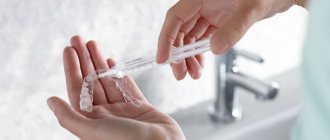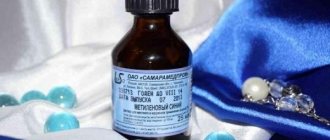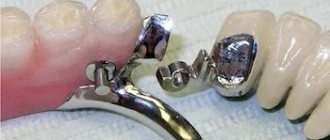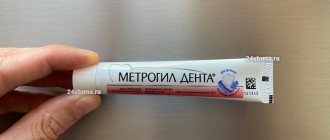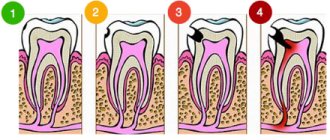Share on social media networks:
Currently, there are a lot of different cleaning and dishwashing products, such as fairies, but not all of them are equally safe. Many housewives prefer time-tested remedies, such as boiling or soda and hydrogen peroxide. These are universal helpers in any kitchen, and not only. They are used for medical and cosmetic purposes, to remove various stains from various surfaces. But today we will talk about their benefits in the kitchen, for example, how to use baking soda and hydrogen peroxide to clean dishes at home.
Benefits when used at home
Even before household products appeared, housewives used folk remedies to keep the kitchen clean. Popular among them were salt and peroxide. The household benefits of these products are as follows:
- effective fight against fat and old stains;
- environmental cleanliness;
- absence of harmful chemicals or allergens, which is important if there are children or allergy sufferers in the house;
- effective odor removal;
- disinfection, elimination of germs or bacteria;
- creating a whitening effect.
Baking soda in combination with oxygen peroxide helps remove complex stains and keep utensils and household appliances clean.
An effective way to remove old grease from dishes
Chemical household products are simple and easy to use. But it is not always possible to remove strong old contaminants with their help. Another disadvantage is that they contain a high amount of chemicals and allergens. You can effectively, quickly, and safely clean dishes with soda and peroxide.
Action
Baking soda and peroxide react to form a clear liquid. The molecules of this alkaline solution act on acids and eliminate them. Due to bactericidal, microbes or bacteria contained on the surface are eliminated.
The two products can also be combined with salted water or alcohol. These components are added to a solution of soda and peroxide to enhance the cleaning effect or add shine. However, they must be washed with gloves to avoid irritation on the skin.
How to clean grease with ammonia?
If the contamination is severe, use ammonia. Dilute one tablespoon of alcohol in one liter of water. For ease of application to the surface, use a spray bottle. Then use the hard side of the sponge to remove grease stains.
Interesting materials:
How to properly cut carrots into cubes? How to draw a French coat correctly? How to properly plant bulbous flowers in pots? How to plant sunflower seeds correctly? How to count weeks in a month? How to sow wheat correctly? How to properly form a hibiscus bush? How to properly shred cabbage on a manual shredder? How to sew with a needle correctly? How to curl headphones correctly?
How to choose a method for cleaning a frying pan
To properly clean an old frying pan from carbon deposits, first of all, determine what material it is made of. There are cast iron, aluminum and stainless steel frying pans.
In modern industry, cookware with non-stick coating is gaining increasing popularity. She requires careful and delicate care. Such pans are easy to clean, as their surface protects against the formation of carbon deposits on the dishes.
We use soda with hydroperite in the bathroom:
- In pharmacies you can buy perhydrol, which in equal proportions with water will help you cope with mold and mildew, which often occurs on the walls and ceiling in the bathroom. This occurs due to high humidity.
- Every housewife has encountered the fact that the curtain in the bathroom is not easy to clean from mold stains. Now you don’t even care about this problem. When washing, add one bottle of peroxide to a container of water - after half an hour, you will see a new, clean curtain that does not have any unnecessary odors and there will not be a single speck of mold or mildew on it
- Another advantage of a substance based on perhydrol is the removal of rust from all plumbing fixtures. To remove these hated stains, you just need to mix water with peroxide in one bowl, 100 mg each. After this, apply the drug to the stain and leave for half an hour. After this time, you will be stunned by the results.
Cleaning dishes by heating
The same substances - glue, soda - can be used to clean containers by heating them. Sodium bicarbonate will help deal with the blackness on the inside of saucepans. Pour water into a dirty container and dissolve 6 teaspoons of sodium carbonate.
The mixture needs to be boiled and not removed from the stove for another quarter of an hour. After this, wait until the water and the container have cooled, pour it out, and remove any remaining dirt with a sponge or brush.
If the dishes are covered with a thick layer of grease that cannot be washed with a regular detergent, you should also use this product. Take soda (preferably caustic) in the amount of 1 tbsp. spoons, dissolve it in a container, add a drop of dishwashing detergent.
Pour the resulting solution into the dirty product, boil it, and keep it on the stove for another 45 minutes. After this, the fat will quickly fall behind. The water must be poured out and any remaining dirt must be removed. Now it is advisable to rinse the container, collect clean water, and boil again to get rid of possible traces of the product.
Expert opinion
Attention!
Note! The lack of salt in the house will not be a problem if you have laundry soap. We grate some of the soap and use it as a cleaning agent in the tips presented above.
Traditional methods against soot in a frying pan
At home, you can use improvised means that are always available in the kitchen. They safely allow you to clean the inside of the frying pan from carbon deposits.
The prepared table will help determine contraindications for using a particular cleaning product for a specific type of frying pan.
Citric acid, vinegar and washing powder
The method involves use with different approaches.
- When the deposits on the dishes are fresh enough, lemon will do its job perfectly. To do this, you need to place the frying pan in the solution (for 1 liter of water - 1 tablespoon of citric acid). Boil for 20-30 minutes. Rinse with warm water.
- You can add vinegar to the prepared solution. Boil the frying pan in this water for 10-15 minutes. Turn off the heat and clean the dishes with a sponge after 2 hours. Then you can add washing powder to the same composition, bring to a boil, and leave for another 1 hour. Rinse with warm water.
- If there are damages and scratches on the frying pan, it is better not to boil the dishes. After each time of use, it is enough to wipe with a sponge soaked in a weak solution of acetic acid.
Important! The method cannot be used to clean aluminum pans, as well as dishes with damaged coating.
Coca Cola
The carbonated drink has long established itself as an excellent means for cleaning pots and pans. Just pour Coca-Cola into a bowl, bring to a boil and after 15 minutes turn off the stove. Leave it like this until it cools completely.
Important! The method is ideal for cleaning cast iron and stainless steel cookware.
Mustard powder
In Soviet times, mustard was valued as the most effective means of removing fat. To do this, a frying pan or saucepan was heated over a fire. They covered the bottom with mustard powder and scrubbed it off. After 20 minutes, wash off with water.
If it was not possible to wash it the first time, then the dishes were soaked in mustard solution for 40 minutes. Then washed again.
Cleaning and boiling in salt solution
Cleaning with salt is suitable for almost any dishware.
- Salt is poured onto the bottom of the frying pan (can be used together with sand).
- Lightly moisten and let stand for at least 2 hours. Sponge.
- If this does not help, you must immediately add water and boil. Perhaps this option will be more effective.
For your information! Do not apply to Teflon and ceramic cookware.
Using hydrogen peroxide, baking soda or soda ash
- Baking soda will help clean the pan from years of carbon deposits. Place a frying pan in a container with boiling water and soda. Reduce the heat to low and leave for 30 minutes. Then turn it off. Let it sit for another half hour. The dishes are washed with warm water.
- If this method does not help, add hydrogen peroxide and a few drops of dishwashing detergent to the soda solution. Leave for another 30-45 minutes. Rinse thoroughly with water several times. The method is actively used for cleaning non-stick frying pans.
Recommendations from experts
Manufacturers of cookware recommend adhering to rules that help extend the life of the frying pan. It is important to follow preventive measures that prevent further contamination.
- When cooking and stirring food in a frying pan, you must use a wooden or plastic spatula.
- Use cleaning powders, scratching sponges, and scrapers as little as possible. This will prevent scratches on the inside of the pan.
- If the frying pan is often washed in the dishwasher, then you must clean it by hand once a month. In this case, you can easily notice the appearance of soot, which can be easily eliminated at the initial stage of its manifestation.
- Melamine sponges are well suited for cleaning ceramic products and enamel dishes. But they can only clean the outside.
- An aluminum frying pan should never be rubbed with an iron sponge. The damaged surface quickly oxidizes and the oxide gets into the food. Which will negatively affect human health.
- Baking soda or coarse salt helps get rid of rust on an old frying pan. After washing, be sure to heat the dishes so that the food does not burn.
Application options
The method of using a folk remedy to remove old stains depends on the type of dishes. It can be used for cleaning pots, pans, baking sheets, cutting boards or cutlery.
Cleaning the pan
Most often, when cooking, stains form on the outside due to exposure to gas or food splashes. If it was not possible to immediately remove the plaque, and over time the use of the dishes a layer of old fat has formed, then to remove it you need to do the following:
- Pour baking soda into a container.
- Gradually add hydrogen peroxide to it, stirring the mixture. You should get a consistency similar to gruel.
- Using a sponge, apply it to the damaged surface. Leave to absorb for 15-20 minutes.
- Rinse off the composition with warm water using a sponge. If necessary, you can further wash it with dishwashing detergent.
This processing method is not suitable for pans made of enameled steel; scratches may appear on it. To clean it, you need to pour a slurry of hydrogen peroxide and soda into warm water, then dip the dishes in it for 20-30 minutes, and then treat the surface with a soapy solution. This method is more effective for removing contaminants covering the bottom surface.
Cleaning the pan
A coating forms on the frying pan after each cooking due to the use of oil. It is not always possible to eliminate it after using detergent; a greasy film continues to remain. To eliminate it you need to:
- Fill the pan to the level where there is dirt. Add 1 tablespoon of soda to the liquid.
- Bring contents to a boil. To speed up this process and improve its efficiency, you need to cover the dish with a lid.
- Add 2 to 6 drops of hydrogen peroxide, depending on the degree of contamination or the volume of the pan.
- Turn off the fire. Leave to soak for 10-20 minutes.
- Drain the water-alkaline mixture and wash the pan with dishwashing detergent or soapy water.
After cleaning, rinse the pan thoroughly with warm water. If plaque has formed on the outside of the utensils, then you should pour the heated solution into a large container and place the contaminated utensils in it for 15-30 minutes.
Removing carbon deposits from a frying pan using household chemicals
It is advisable to choose a dish cleaning product that does not contain abrasive substances. It is better to use household chemicals to clean the outside of the frying pan. To clean the inside of the dishes, it is safer to use folk remedies.
- Schumannite is one of the most powerful grease cleaners. Contains alkali. Copes with even the most stubborn stains on cast iron, enameled and metal products.
- "DazhBo" is a washing liquid suitable for cleaning any surface.
- "Easywork" - copes well with any dirt.
- "Unicum" is a universal cream for cleaning dishes. It has a pungent odor, but is capable of cleaning even the most multi-layered deposits in 2 minutes.
- Frosch is a plant-based cleaner. Has a convenient sprayer. It is in great demand among housewives.
The use of any chemical means compliance with safety measures. Therefore, before you start cleaning dishes with a chemical composition, you must wear rubber gloves. If the procedure is carried out at home, you should open a window or vent in the kitchen.
How to care for a cast iron frying pan. Pollution prevention
The pan must be washed properly. After cooking, any leftover food is removed and the dishes are cooled. Next, pour the cast iron utensils with warm water with the addition of soap or a special detergent, leave for half an hour and rinse with running water. Then the dishes are dried and wiped with a towel.
To prevent contamination you will need:
- Every time after cooking, rinse the pan thoroughly.
- Use non-aggressive detergents.
- Wash dishes from all sides - both inside and outside.
- Regularly restore the non-stick coating.
- Avoid soaking dishes for a long time.
- Store dishes in a dry place.
- Do not store ready-made dishes in a frying pan, as the oxidation process breaks the protective layer.
Using office glue
Add water to the dirty bowl so that it fills half of it. Add to it a small part of a pack of soda and a whole jar of PVA glue. Stir well and put the product on the fire. Bring to a boil, hold for another half hour, then leave to cool. After a couple of hours, the container should be freed from dirt and rinsed thoroughly.
In 3 liters of warm water, dissolve a third of grated laundry soap, 100 grams of soda, and 120 g of silicate glue. We load the dishes that require cleaning into the tank, put them on the fire and wait until they boil. It should boil for half an hour, and then you need to turn off the heat and let it cool.
If the dirt has not yet completely left behind, leave the products in the water. Or you can take the pans out to cool in the air. As soon as they become slightly warm, you should rinse them a couple of times under running water.
In a large bowl of warm water, dilute 100 g of PVA glue and 110 g of sodium carbonate. After stirring the ingredients until dissolved, add the burnt items into the bucket. Place the bowl on the stove and wait until it boils.
After the liquid boils, turn it off and leave to cool. The dirt should fall off and end up in the water, but if there is some layer left on the walls, it can be removed with a sponge.
The following method is suitable for very advanced cases. Take a large fireproof bucket and pour 8 liters of water.
Dissolve a glass of soda, grated half of soap, and a bottle of silicate glue in the liquid, stir thoroughly. Place the pot or frying pan that needs cleaning into the container and start boiling.
The boiling time will depend on the extent of the contamination: some pots will become clean in half an hour, while others will take an hour or more to regain their original appearance. When all the dishes are clean, turn off the heat and leave for another hour until it cools completely. After this, rinse the pans under running cool water.
Cleaning methods
Cast iron products have many advantages, so they are not cheap. Throwing away a good thing if it is heavily soiled, and even more so if it is slightly soiled, is impractical and wasteful.
